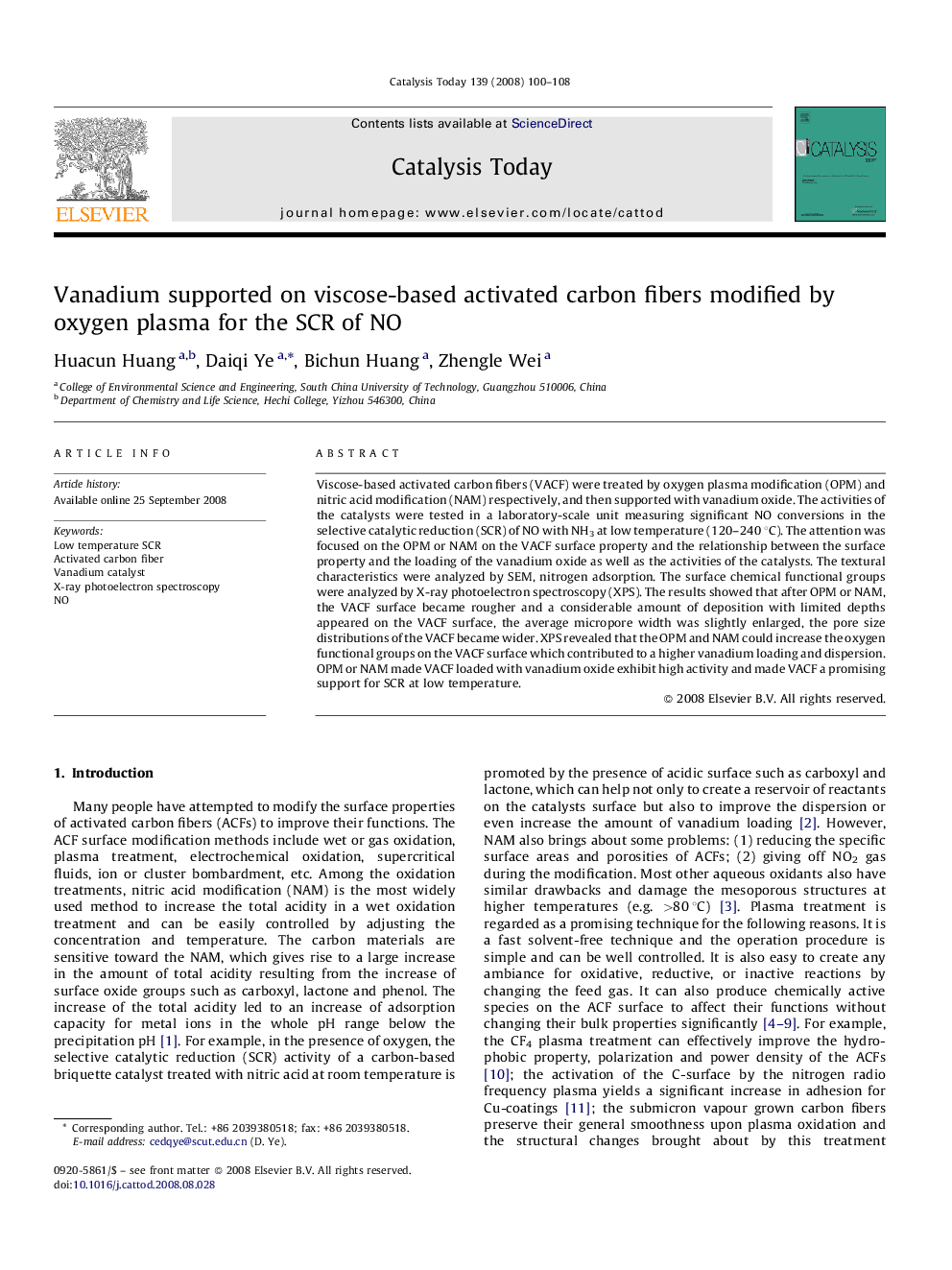| Article ID | Journal | Published Year | Pages | File Type |
|---|---|---|---|---|
| 57413 | Catalysis Today | 2008 | 9 Pages |
Viscose-based activated carbon fibers (VACF) were treated by oxygen plasma modification (OPM) and nitric acid modification (NAM) respectively, and then supported with vanadium oxide. The activities of the catalysts were tested in a laboratory-scale unit measuring significant NO conversions in the selective catalytic reduction (SCR) of NO with NH3 at low temperature (120–240 °C). The attention was focused on the OPM or NAM on the VACF surface property and the relationship between the surface property and the loading of the vanadium oxide as well as the activities of the catalysts. The textural characteristics were analyzed by SEM, nitrogen adsorption. The surface chemical functional groups were analyzed by X-ray photoelectron spectroscopy (XPS). The results showed that after OPM or NAM, the VACF surface became rougher and a considerable amount of deposition with limited depths appeared on the VACF surface, the average micropore width was slightly enlarged, the pore size distributions of the VACF became wider. XPS revealed that the OPM and NAM could increase the oxygen functional groups on the VACF surface which contributed to a higher vanadium loading and dispersion. OPM or NAM made VACF loaded with vanadium oxide exhibit high activity and made VACF a promising support for SCR at low temperature.
